Dress Up Cabbage for Summer Meals:
Coleslaw 3 Ways
Humble cabbage, often passed over in favor of glamorous sister vegetables such as kale, rapini, broccoli and cauliflower, turns into Cinderella come coleslaw season.
At its simplest, shredded cabbage and onion tossed with lime juice and a few seasonings, make a cool and crisp taco or burger filling. Add more ingredients and transform it into a summer side. With a little grilled chicken, fish or tofu it becomes an entrée.
Does coleslaw have to have shredded carrots and a creamy, celery seed dressing? I challenge those notions. Slaws can range from classic to exotic, depending on the choice of ingredients. A student at the Seattle Culinary Academy where I teach recently added shaved asparagus to a coleslaw and tucked it into a grilled salmon soft taco – delicious.
Clear vinaigrette made with good olive oil, or gingery vinaigrette with sesame or nut oil entertain my palate well. Mix shredded Brussels sprouts, thinly sliced kale or red cabbage with common white or green cabbage. Choose mild Nappa cabbage for an Asian theme, or grab a Savoy cabbage if you find one. And don’t forget a liberal handful of fresh summer herbs.
Here are three versions of slaw, Mediterranean, Latin and Asian, to go along with popular summer culinary themes. I work off of a formula so I can easily morph my coleslaw into another ethnicity: 3 cups of cabbage with about 3 cups of other “stuff” and a dressing. I include ½ cup of something crunchy and ½ cup of something in the onion family – shallots, red onion, green onion or chives. A “specialty” ingredient– roasted nuts, a handful of crumbled or shredded cheese, chopped olives, or succulent mango or papaya – is the finishing touch.
Cabbage is in the powerfully nutritious family of cruciferous vegetables. Studies have shown that diets rich in these cruciferous vegetables are associated with lower risk of some cancers. This has lead researchers to study the compounds derived from glucosinolates found in these vegetables. Eating these vegetables raw in a salad may help deliver more of the cancer-fighting benefits.
Shredded cabbage contains about 24 calories per cup and is a source of fiber, vitamin C and folate. Red cabbage has more vitamin A, beta carotene, B6, vitamin K and manganese.
Julia Child says, “You can’t treat red cabbage like green cabbage…if you want to serve it raw. It wants to be very finely shredded and needs a maceration of a day or two in a solution of salt and vinegar to tenderize it.” In her book, Julia Child & More Company, she pickles shredded red cabbage with red wine vinegar and canned beet juice with red onion, garlic, bay, mustard seeds, juniper berries, apples salt and sugar.
With all respect to Julia, I skip maceration and just mix shredded red cabbage with green or white cabbage for added color and nutrients. The color comes from antioxidant anthocyanidins in the flavonoid family. These compounds are being researched for health benefits including, delayed aging, prevention of urinary tract infections and improved nerve transmission and circulation. You’ll find these same pigments in other red and purple foods including raspberries, cherries, blueberries, cranberries, pomegranates, beets, red grapes and red wine.
Use a stainless steel knife and an acidic dressing to preserve the color of red cabbage. In a basic environment, PH over 7, the gorgeous red or purple color will turn blue, green or even yellowish. (You may be familiar with this discoloration in baked blueberry muffins leavened with baking soda which lowers acidity.)
To prepare cabbage: Place a whole cabbage, stem side down, on a cutting board. Cut into quarters. Slice off and discard core from each quarter. Slice cabbage into very thin shreds. A box grater (try the coarse grater or slicing blade), a mandolin or food processor can streamline the process.
While I rarely do this, some recommend salting cabbage before making coleslaw to draw out some water. This can prevent a watery slaw if made ahead of time. Place sliced cabbage in a colander set over a plate. Toss with salt (about 1/2 teaspoon for 3 cups) and let drain for 1 to 4 hours. (I put it in the refrigerator if left to drain for over an hour.) Rinse well, drain and then pat dry on a clean towel or paper towels. Proceed with your recipe.
Savor slaw this summer!
Coleslaw – Three Recipes
Mediterranean Coleslaw
3 cups thinly sliced cabbage
1 cup arugula, kale, baby salad greens or dandelion greens
1 cup thinly sliced red, yellow or orange bell pepper
1/2 cup seeded and thinly sliced Roma tomato
1/2 cup thinly sliced red onion
1/2 cup thinly sliced fresh basil (or mix basil with fresh sliced mint or other Italian herbs)
1/3 cup sliced pitted kalamata, nicoise or other olives or chopped sun-dried tomatoes (optional)
Mediterranean Dressing:
1 1/2 tablespoons white balsamic vinegar or white wine vinegar
1/2 teaspoon salt
Freshly ground black pepper
1 teaspoon Dijon mustard
3 tablespoons olive oil
1. To make dressing, in small bowl stir together vinegar, salt, pepper and mustard. Stir in olive oil. Cover and chill until ready to serve.
2. Combine ingredients for coleslaw in a large bowl. Add dressing and toss to blend. Makes 4 servings.
Tips and Variations:
- For garlic flavor, rub bowl with garlic or add a smashed clove to the dressing and chill until serving time. Remove garlic before serving.
- Replace olives with toasted pine nuts.
- Replace basil with 1/4 cup thinly sliced fresh mint or chopped dill and 1/4 cup chopped fresh parsley
- Top with shaved fresh Parmesan cheese or a handful of crumbled feta cheese.
Latin Coleslaw
3 cups thinly sliced cabbage
1 cup grated carrot
1/2 cup chopped red, yellow or orange bell pepper or jicama
1/2 cup chopped avocado
1/2 cup chopped mango
1/3 cup thinly sliced green onion, chives or red onion
1/4 cup chopped fresh cilantro
Creamy Latin Dressing:
1/3 cup reduced-fat mayonnaise
1/3 cup reduced-fat sour cream or lowfat Greek yogurt
1/2 teaspoon finely grated lime zest (optional)
3/4 teaspoon ground cumin
3/4 teaspoon ground ancho or other chili powder
2 to 3 teaspoons lime juice
1/4 teaspoon salt, more to taste
Freshly ground black pepper
1/2 to 1 finely chopped fresh jalapeno or Serrano pepper
1. To make dressing, in small bowl, stir together all dressing ingredients. Cover and chill until serving time.
2. Combine ingredients for coleslaw in a large bowl. Add dressing and toss to blend. Makes 4 servings.
Asian Coleslaw
3 cups thinly sliced Nappa, white or green cabbage
1 cup arugula, kale or baby salad greens
1 cup grated carrot
1/2 cup chopped fresh pineapple
1/2 cup thinly sliced red onion
1/2 cup chopped fresh cilantro
1/3 cup chopped toasted almonds
Ginger Dressing:
1 1/2 tablespoons rice wine vinegar
2 to 3 teaspoons finely grated or chopped, peeled ginger
1 teaspoon reduced-sodium soy sauce or 1/2 teaspoon salt
1 teaspoon Dijon mustard
1 teaspoon honey or brown sugar
Freshly ground white or black pepper
1 tablespoons toasted (Asian) sesame oil
2 tablespoons canola or other vegetable oil
1. To make Ginger Dressing, in small bowl stir together vinegar, ginger, soy sauce, mustard, honey, salt and pepper. Stir in sesame and vegetable oils. Cover and chill until ready to serve.
2. Combine ingredients for coleslaw in a large bowl. Add dressing and toss to blend. Makes 4 servings.
References
Julia Child & More Company, by Julia Child, p. 84-85. Alfred A. Knopf, New York, 1979.
Essentials of Nutrition for Chefs, Catherine Powers, MS, RD, LD and Mary Abbott Hess, LDH, MS, RD, LDN, FADA 161-162. Culinary Nutrition Publishing 2013.
Foods that Fight Cancer, American Institute for Cancer Research, http://www.aicr.org/foods-that-fight-cancer/broccoli-cruciferous.html
Slaws in the Kitchen, Karen Ferries, RD, ADA Times, Sept-Oct 2008.
© 2013 Lorelle Del Matto
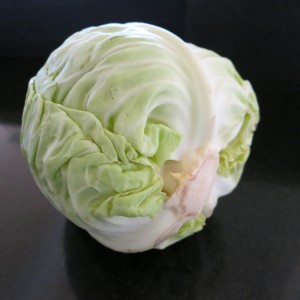
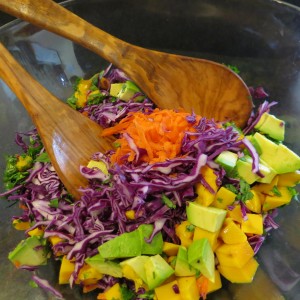
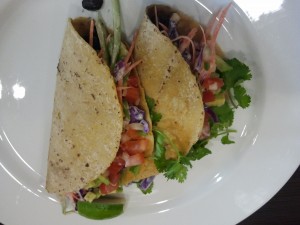
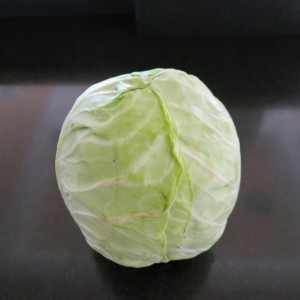
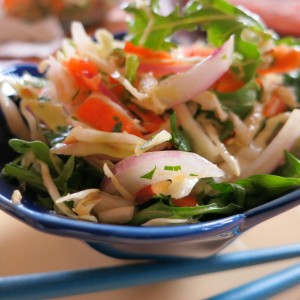
 About lorelle
About lorelle
Speak Your Mind